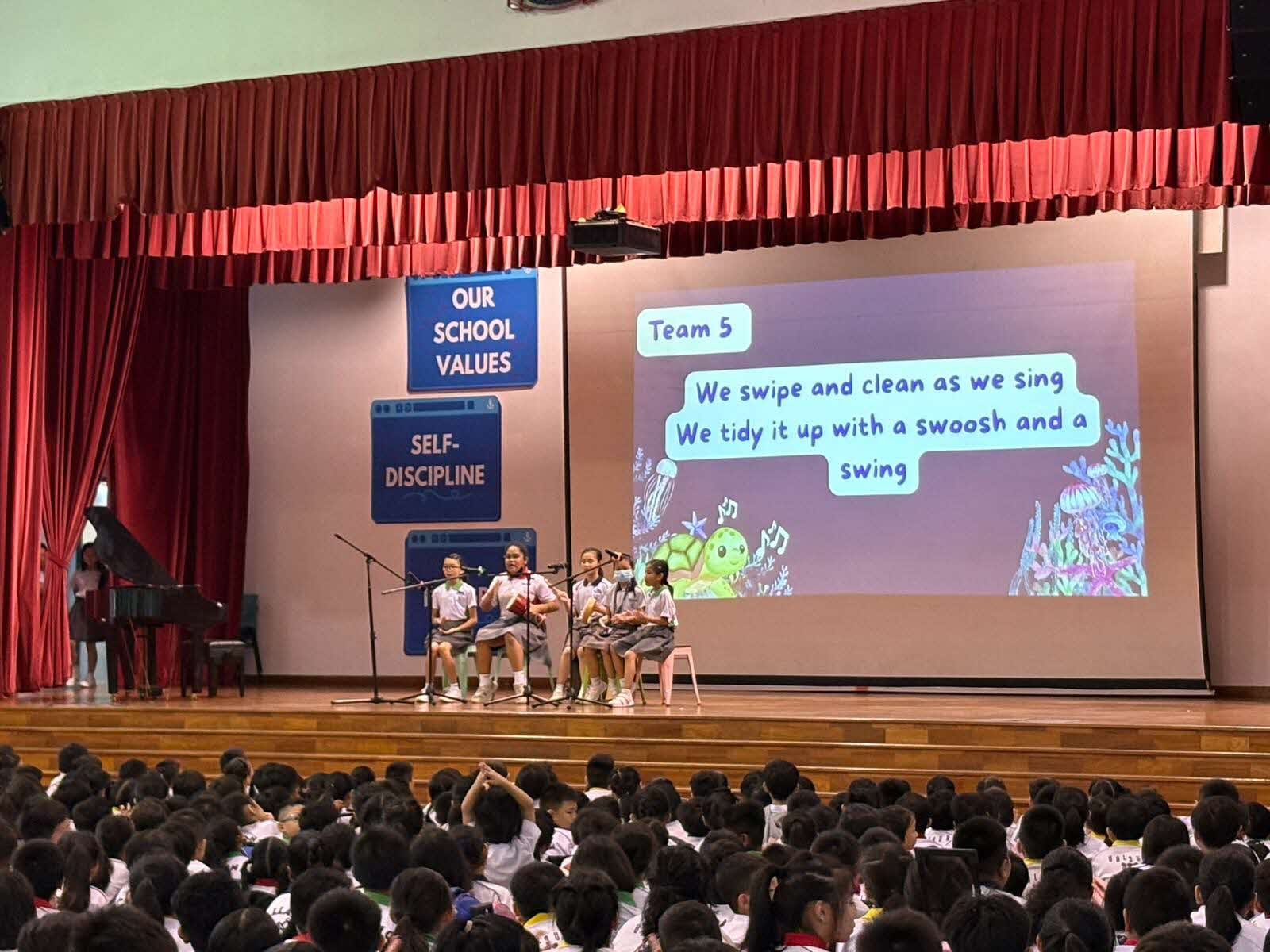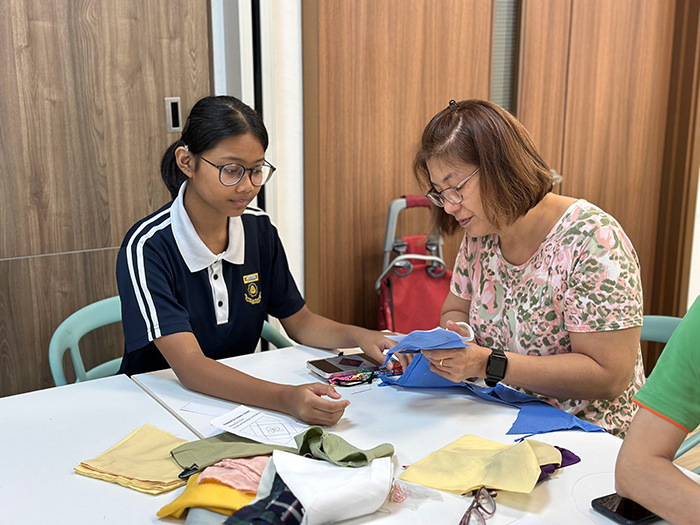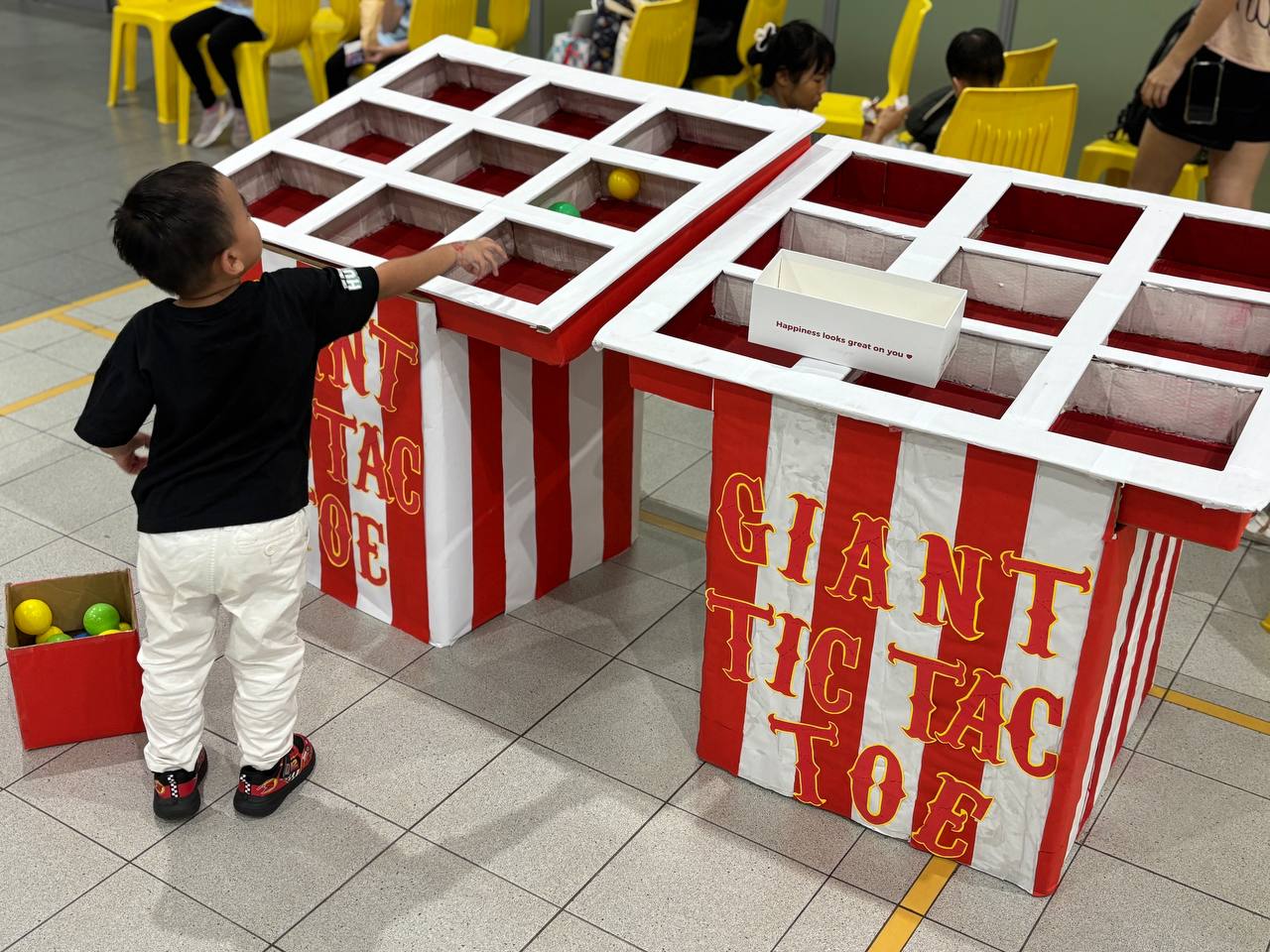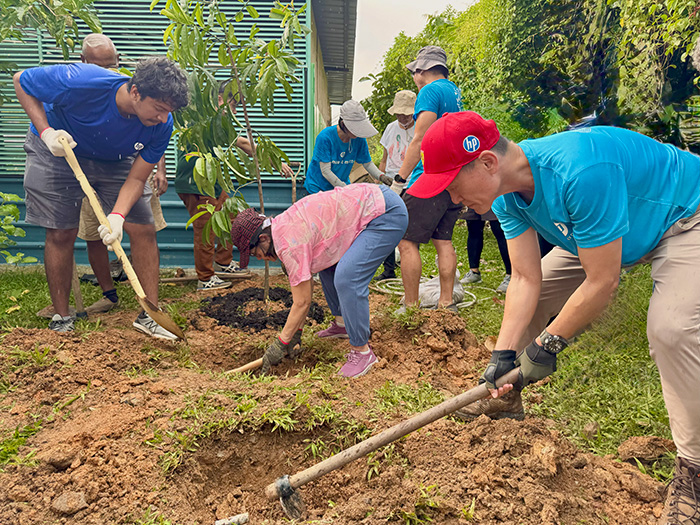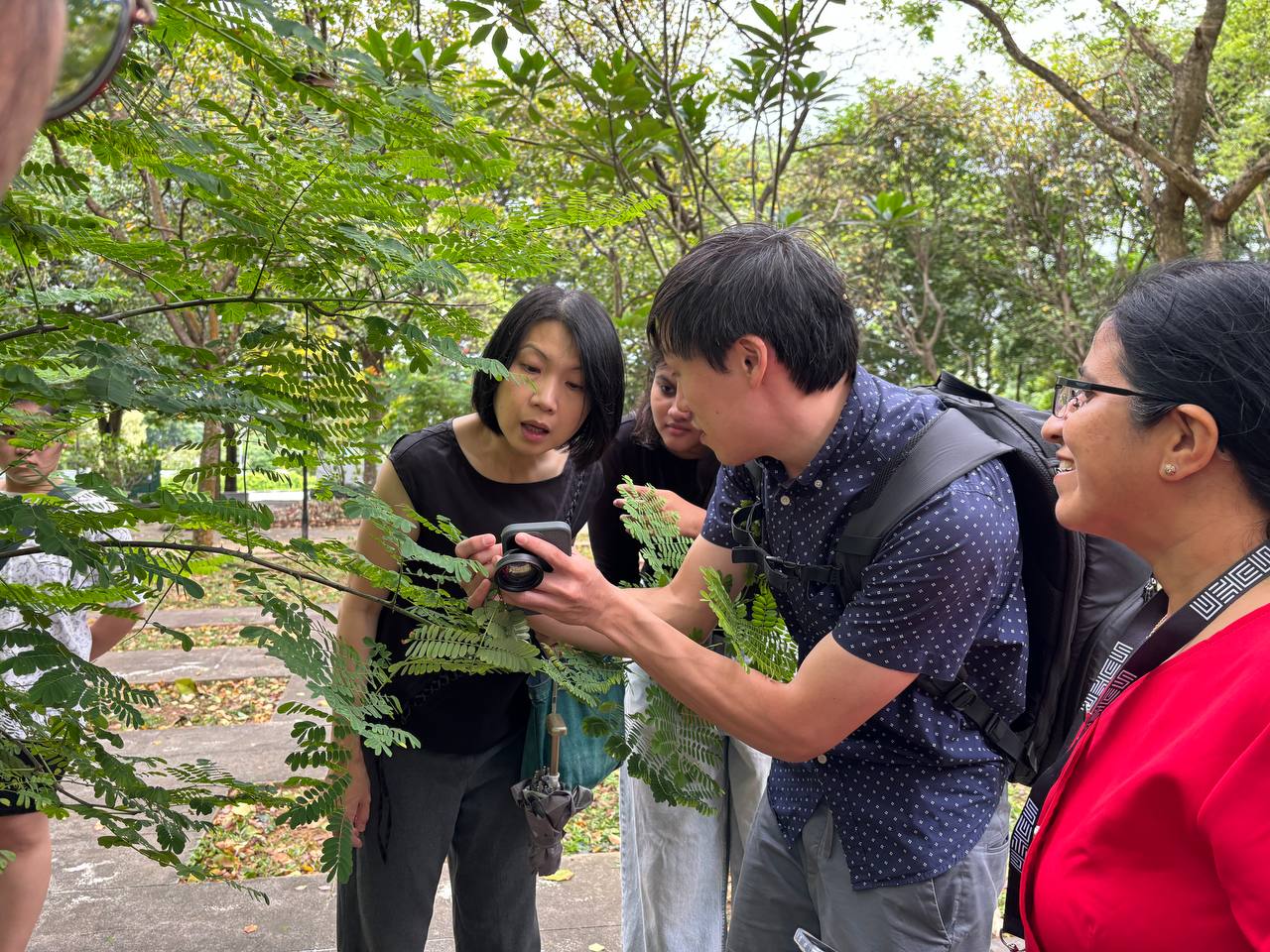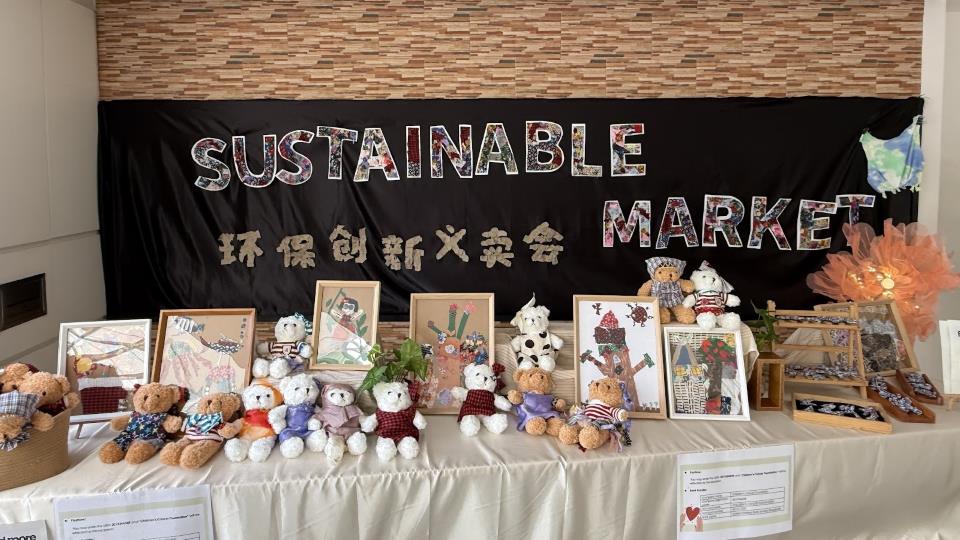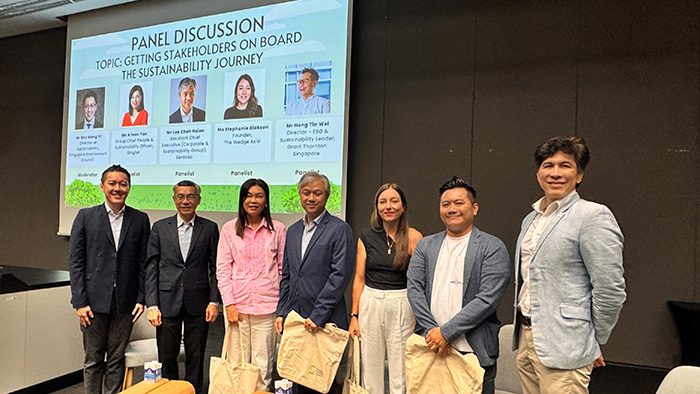
By Kok Jia Yuan, Kevin
If you’ve ever tried persuading your family, friends or colleagues to adopt more sustainable practices, you’re likely familiar with the resistance or indifference that often follows.
So, how do we get more people to embrace sustainability? In support of Go Green SG 2025, Singapore Polytechnic (SP) and the Singapore Environment Council (SEC) discussed this very question at their seminar, “Getting Employees on Board the Sustainability Journey”. But even though it was targeted at employers, there were takeaways for the average person too. Here is what I learnt from the event:
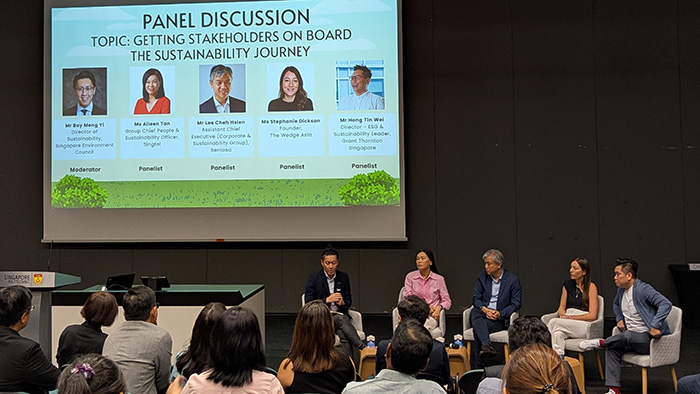 The panellists sharing their experiences in getting stakeholders on board the sustainability journey.
The panellists sharing their experiences in getting stakeholders on board the sustainability journey.
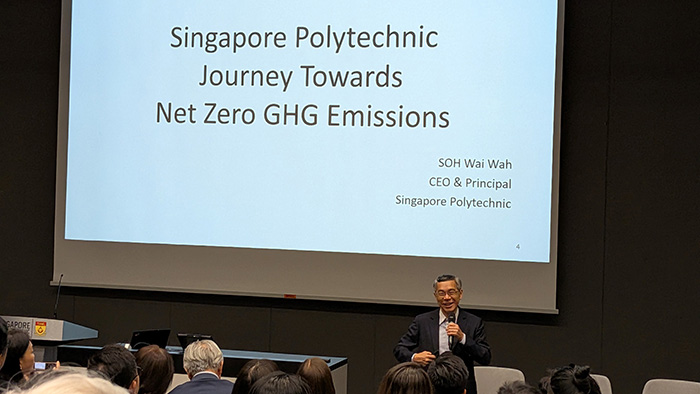
Mr Soh Wai Wah sharing about SP’s journey towards sustainability.
Mr Soh Wai Wah, CEO and Principal of SP, also utilised this approach for his team. He appealed to their calling as educators, encouraging them to lead by example for their students.
2. It’s About Building Momentum
A common question many ask is “Am I really making a difference?” Individual actions can seem miniscule compared to the scale of global warming. But as Dr Sharon Lim, Course Chair of the Diploma in Biomedical Science at SP, points out, “individual actions matter, even the small ones.” For example, SP staff made it a habit to switch off their multi-plug adaptors when not in use. While this action may not have drastically reduced their emissions, it served a more powerful purpose: building and sustaining momentum.
Every action reinforces a commitment to sustainability. This, in turn, fosters collaboration, like office discussions about whether all the lights needed to be switched on. Hence, while our individual actions may not significantly reduce our emissions, we should not downplay their effect in making sustainability second nature to us.
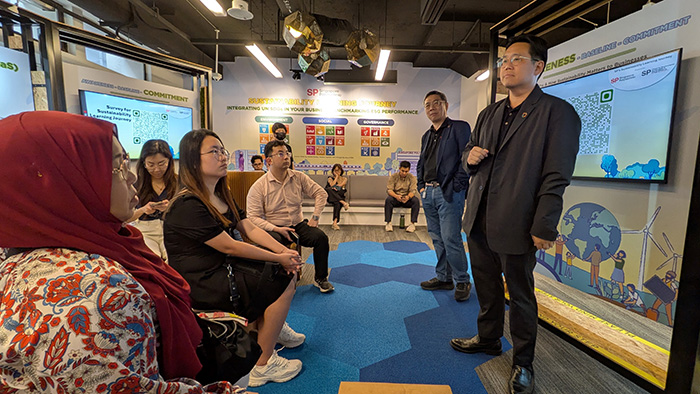 Sustainability Learning Journey guide Dr Charles Chia (in black) and Mr Ho Chii Wen (in blue) taking questions from participants.
Sustainability Learning Journey guide Dr Charles Chia (in black) and Mr Ho Chii Wen (in blue) taking questions from participants.Your next question might then be: “Well… how do I build or sustain momentum?”
Here are a few tips shared at the event:
- Ownership. Allow room for people to come up with their own ideas. Mr Stanley Chan, SEC Deputy Director Communities and Communications, shared that when people can “see, do and reflect for themselves, the message becomes more meaningful, memorable and impactful.”
- Gamification. You can inject elements of fun to make sustainability more engaging. For example, if you have children, you can create a friendly competition of who recycled the most in a month.

